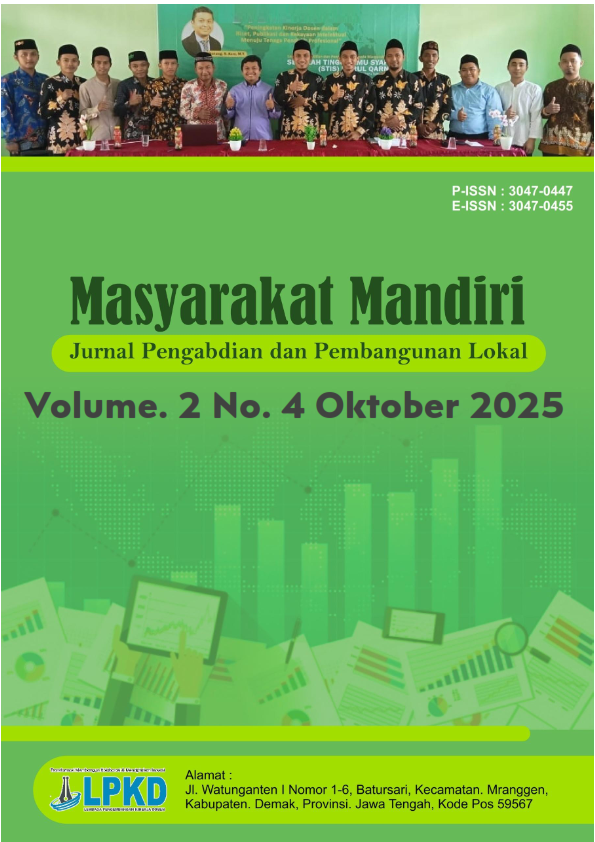Kebebasan Bersuara: Menimbang Risiko dan Ruang Aman di Era Digital
DOI:
https://doi.org/10.62951/masyarakatmandiri.v2i4.2238Keywords:
Digital literacy, Digital space, Freedom of expression, Human rights, Safe spaceAbstract
Freedom of expression is a fundamental human right, yet it is not absolute, as it may be restricted under certain conditions in accordance with international law, such as the protection of reputation, national security, and public order. In Indonesia, this right is guaranteed by the 1945 Constitution of the Republic of Indonesia and its derivative regulations. However, the rapid development of information and communication technology has reshaped the landscape of public discourse. The digital space, while facilitating easier access to and dissemination of information, also presents challenges, including hate speech, misinformation, cyberbullying, and the potential for criminalization due to ambiguous regulations.To respond to these challenges, the Regional Board of Nasyiatul Aisyiyah (PDNA) Semarang organized a community service program in the form of a public dialogue titled “Freedom of Speech: Between Rights and Risks” on August 9, 2025, at the Hall of the Central Java Provincial Archives and Library Service. This activity was carried out through a participatory approach by academics who are also members of PDNA, together with the PDNA Semarang board. Two speakers were presented, Dr. Mochamad Riyanto, S.H., M.Si., a legal expert from Universitas 17 Agustus (Untag) Semarang, and Aris Mulyawan, Chair of the Alliance of Independent Journalists (AJI) Semarang. The dialogue produced three main findings: first, the need for legal awareness so that freedom of expression does not lead individuals into legal problems; second, the importance of digital literacy to reduce the spread of hoaxes and hate speech; and third, the urgency of building safe digital spaces through collaboration among communities, media, and educational institutions. The discussion emphasizes that freedom of expression in the digital era must be understood as both a right and a responsibility, requiring a fair regulatory ecosystem and continuous digital literacy enhancement
References
Ariany, L., & Perdana, S. (2025). Batasan Kebebasan Berpendapat Di Indonesia Perspektif Hak Asasi Manusia. Jurnal Hukum Lex Generalis, 5(12).
Aulia, A. N. (2025, August 10). Kebebasan Bersuara: Menimbang Risiko dan Ruang Aman di Tengah Gelombang Digital. Pimpinan Daerah Muhammadiyah Kota Semarang. https://muhammadiyahsemarangkota.org/kabar-persyarikatan/kebebasan-bersuara-menimbang-risiko-dan-ruang-aman-di-tengah-gelombang-digital/
Bakhtiar, N. Y., Husen, L. O., & Bima, M. R. (2020). Pemenuhan Hak Kebebasan Berpendapat Berdasarkan Undang-Undang Nomor 9 Tahun 1999 Tentang Kemerdekaan Berpendapat di Muka Umum. Journal of Lex Theory, 1(1), 41–58.
Dewi, C. I. D. L. (2021). Aspek Hukum Kebebasan Berpendapat dan Berekspresi. Yustitia, 15(1), 2632.
Pratama, M. I., Rahman, A., & Bachmid, F. (2022). Kebebasan Berpendapat dan Berekspresi di Media Sosial dalam Perspektif Hak Asasi Manusia. Qawanin Jurnal Ilmu Hukum, 3(1), 1–16.
Suara Muhammadiyah. (2025, August 11). PDNA Kota Semarang Dorong Ruang Digital Aman Berpendapa. Suara Muhammadiyah. https://www.suaramuhammadiyah.id/read/pdna-kota-semarang-dorong-ruang-digital-aman-berpendapat
Downloads
Published
How to Cite
Issue
Section
License
Copyright (c) 2025 Masyarakat Mandiri : Jurnal Pengabdian dan Pembangunan Lokal

This work is licensed under a Creative Commons Attribution-ShareAlike 4.0 International License.





